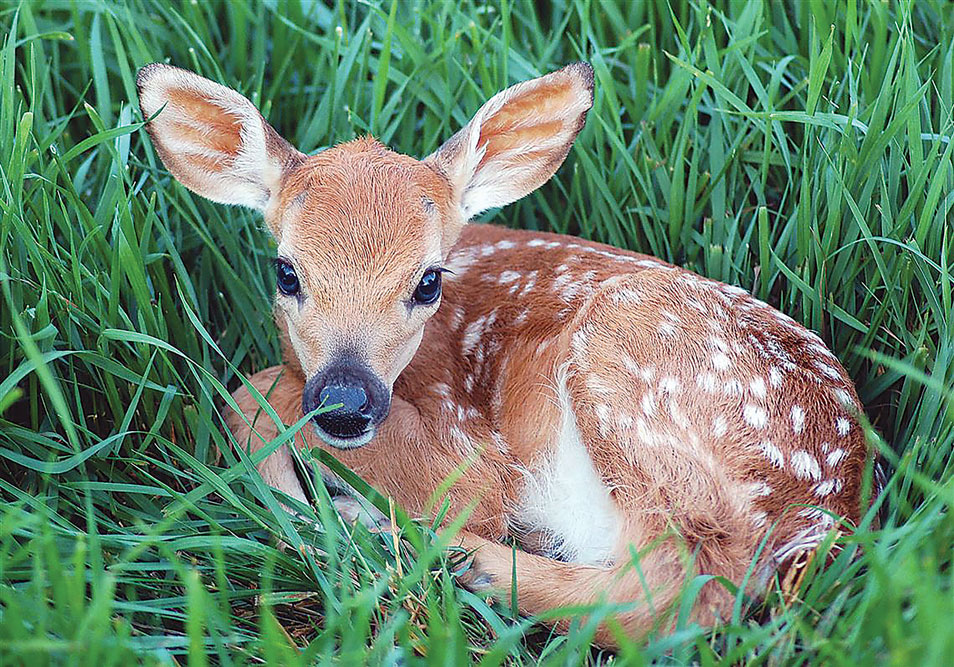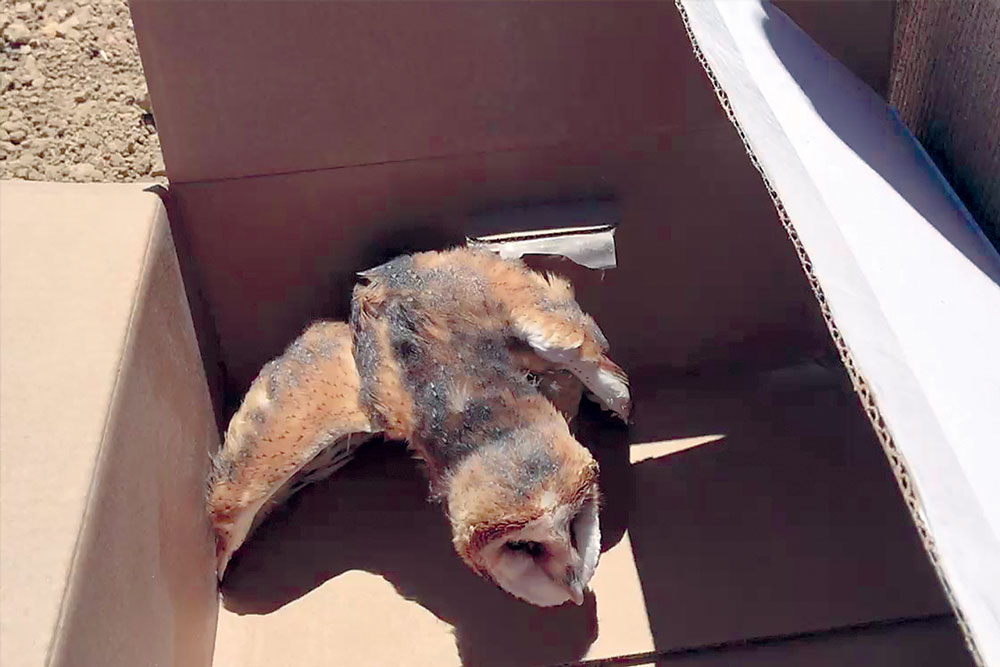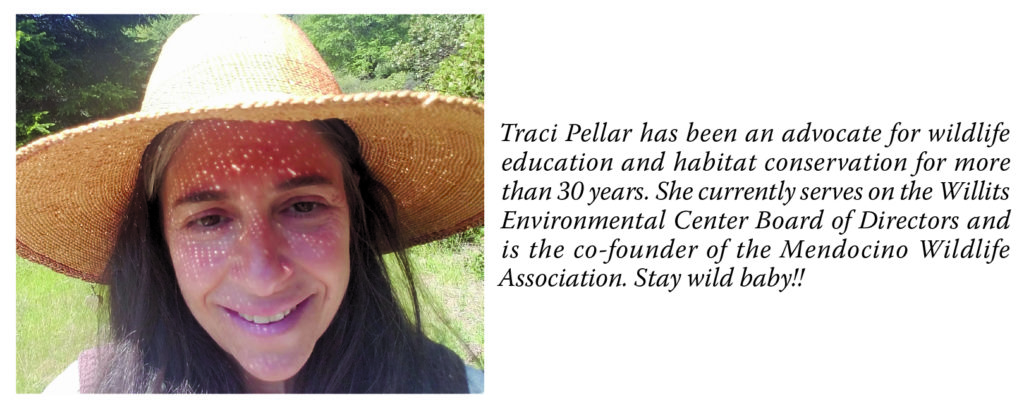To Rescue or Not to Rescue

Uh-OH. You see wildlife stressed and in pain. What do you do?
First, you must assess the situation. Are you going to attempt a rescue or let nature do Her thing?
Are you prepared to do a rescue?
Say you want to rescue a fox with a broken leg. She’s on the side of the road, and you want to take her to a wildlife rescue facility. The first thing to do is to call the nearest one and make sure it’s okay. Always keep an eye on your patient—rescue specialists on the phone will ask if you have eyes on it.
What I’m about to share with you will work for a multitude of rescues if that’s the path you choose to take.
Now, the first option—to rescue—can be hard, especially if you’re alone. If you decide to do a rescue, NEVER attempt to rescue the following: a full-grown raccoon, a baby bear, a full-grown (even if small) deer (no spots), coyote, bobcat, or a river otter. All these guys can be really intense, and you should call for backup or advice. If you can, get in touch with your local game warden for help, or if the animal is on the actual highway, you can call for CHP backup.
Okay, let’s continue with this scenario where you’ve decided to commit to a rescue. First thing, take a deep breath and calm those nerves as best you can. Now, before you do this rescue, it’s important to have a game plan. Where is the road? Will the animal run? Are you safe? Where is the injury and where is my target to grab? You know this rescue is all on you. No one else will be responsible if you get hurt.

You will need a cardboard box, a blanket or towel, and ideally a friend to help. Use the blanket or towel to toss it over the injured wildlife. That makes it stop and think “What just happened?!” You take that freeze opportunity to get a good grasp, and because you’ve stopped to evaluate the situation, you know just where to grab. Your box or kennel is ready and open and it’s sitting right next to the injured wildlife. It’s handy to have a partner nearby to hold that door or flap open and shut it once you have deposited the wildlife.
If you are rescuing a bird, a cardboard box is best. Close it up and make it dark. Immediately they will feel better. When dealing with birds it is also important to not put towels in the box because they can get their talons or claws caught.
Okay, so now you have your wildlife in a box safely. Try to speak in a low voice and drive carefully to the nearest rehab facility. Typically, you will get a call from the rehab facility if your patient recovers. They will offer you the opportunity to pick up and release your little survivor, and if you can’t, they will find someone who will. The recovered patient will be released where it was found, within a 1- to 3-mile radius.
So, what happens when we just leave it alone? (Remember, wildlife eats wildlife.) If the injured animal is in a huge amount of pain and suffering, call the sheriff or CHP, and they will help you get in touch with a local warden.
These can be hard choices. We out here in the woods see enough wildlife to know that it’s a harsh world out there for them. They love it, though! They wouldn’t have it any other way. Well, maybe more fish in the creeks and more luscious habitat, but it’s still the open wild they call home. Eating and being eaten is a daily occurrence. It’s a web thing.
Let’s talk about one more scenario, abandoned wildlife. If you see a fawn (has spots), leave it; you see a baby jackrabbit (fur), leave it. Other babies you may “find,” such as squirrels at the foot of trees or birds, give the mamas a chance to find them themselves. It is important to not meddle too much in the ways of things. If you do find a baby bird, listen for its mama when it cries. Usually there is a nest nearby. If you see that nest, put that baby back. It’s a myth that you can’t touch babies. If you see a squirrel at the foot of a tree, let it scream and mama will come get it. If it’s at night, bring it in, keep it warm, and try again the next day. If the baby is injured or sick, the mama squirrel will not retrieve it. Now, if your cat is going to eat the infant, then we may have a rescue situation on our hands. Speaking of domestic terrors, please do your best to make sure your pets aren’t killing the wildlife. I mean, even my chicken likes to eat lizards and frogs! I tell ya, it’s hard to have nirvana these days—we can try, though. All we can do is our best.
We Can Help By Doing The Following:
DRIVE CAUTIOUSLY! Ya feel me here? There’s so much beautiful wildlife on
the road.
DO NOT FEED WILDLIFE! We have a saying: “A fed bear is a dead bear.” By feeding wildlife, it could possibly spread disease and/or create a nuisance situation.
One of the saddest things, however, is distemper (a contagious and incurable viral disease). That’s a whole article in and of itself. Here we can say there is nothing, unfortunately, to be done for that (except prevention). Distemper shows itself in dogs, foxes, skunks, racoons, coyotes, minks, fishers, and others. It is a viral infection that wildlife gets mainly from unvaccinated pets. Signs of distemper are jerky motions, walking in circles, coming close to you without fear, or the sick animal may just be lying down and suffering; it depends on what stage it’s in. Things we can do to help prevent distemper are:
- Vaccinate your puppies for it.
- Do not put out water for wildlife in a standing vessel (big vector for disease).
- Help spread the word.
Another super sad one is poison. Those darn rats and mice. I just have to share a Living with Wildlife story with you guys.
My friend is an exclusionist in NY. He gets a call for some mice to exclude. He goes over and the owner says, I have a weasel now! A wild weasel moved into his house and took out all the mice!! Crazy, right? I have another cool story about a rattlesnake, but I’ll tell you later. Back to poisons. Poisons…. I get it, what do we do? When we poison rodents, we poison the wildlife pantry. Look up ways online to rid yourself of these issues without poisons first. Honestly, kill traps are much better than poisons. Throw the carcass out for snacks for a wild opportunist.
If there is someone from the wildlife community distressed or dying, it’s hard to watch, especially when we can’t do anything about it. Assessing the situation is important because if a creature is dying, it would rather die at home, in the wild, than get transported and euthanized. This is life. Wild life. We can hope the subject has died of natural causes and will be good nourishment for someone else. The wheel of life must turn.
Living with awesome-sauce wildlife such as foxes and hawks is such a privilege. I hope you all are enjoying the company of your wild community. Next time we will talk about exclusion. Meanwhile, here’s some homework: Look up wildlife exclusion and see what you learn. Until then, STAY WILD, BABY!!
Check out our blog at mendowildblog.com

